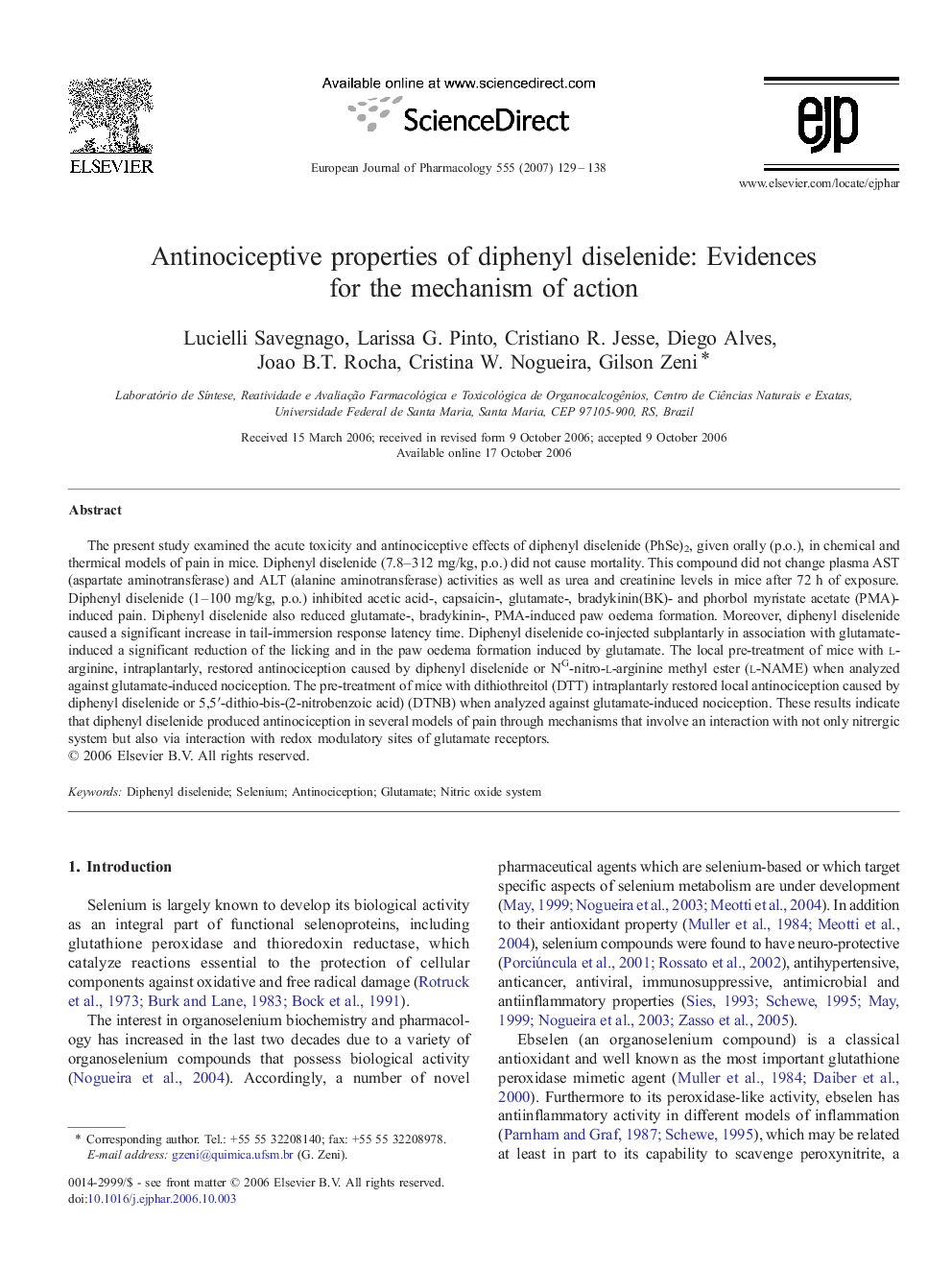| Article ID | Journal | Published Year | Pages | File Type |
|---|---|---|---|---|
| 2536723 | European Journal of Pharmacology | 2007 | 10 Pages |
Abstract
The present study examined the acute toxicity and antinociceptive effects of diphenyl diselenide (PhSe)2, given orally (p.o.), in chemical and thermical models of pain in mice. Diphenyl diselenide (7.8-312Â mg/kg, p.o.) did not cause mortality. This compound did not change plasma AST (aspartate aminotransferase) and ALT (alanine aminotransferase) activities as well as urea and creatinine levels in mice after 72Â h of exposure. Diphenyl diselenide (1-100Â mg/kg, p.o.) inhibited acetic acid-, capsaicin-, glutamate-, bradykinin(BK)- and phorbol myristate acetate (PMA)-induced pain. Diphenyl diselenide also reduced glutamate-, bradykinin-, PMA-induced paw oedema formation. Moreover, diphenyl diselenide caused a significant increase in tail-immersion response latency time. Diphenyl diselenide co-injected subplantarly in association with glutamate-induced a significant reduction of the licking and in the paw oedema formation induced by glutamate. The local pre-treatment of mice with l-arginine, intraplantarly, restored antinociception caused by diphenyl diselenide or NG-nitro-l-arginine methyl ester (l-NAME) when analyzed against glutamate-induced nociception. The pre-treatment of mice with dithiothreitol (DTT) intraplantarly restored local antinociception caused by diphenyl diselenide or 5,5â²-dithio-bis-(2-nitrobenzoic acid) (DTNB) when analyzed against glutamate-induced nociception. These results indicate that diphenyl diselenide produced antinociception in several models of pain through mechanisms that involve an interaction with not only nitrergic system but also via interaction with redox modulatory sites of glutamate receptors.
Related Topics
Life Sciences
Neuroscience
Cellular and Molecular Neuroscience
Authors
Lucielli Savegnago, Larissa G. Pinto, Cristiano R. Jesse, Diego Alves, Joao B.T. Rocha, Cristina W. Nogueira, Gilson Zeni,
